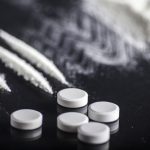With the heroin epidemic sweeping our nation, touching every social class, race, and community, it’s understandable why most of our efforts have been directed toward opioid addiction. Nevertheless, why does it seem as though we have forgotten about cocaine addiction? A drug that has been around for decades and has killed thousands hardly ever gets mentioned among politicians or lawmakers anymore. Today our Clearbrook rehab is shedding light on the crack cocaine epidemic everyone forgot about.
Crack Cocaine Effects
The most recent reports show that 1.5 million Americans ages 12 and older are active cocaine users. Of that, 913,000 met the DSM 5 (Diagnostic and Statistical Manual of Mental Disorders, Fifth Edition) criteria for dependence or abuse.1 Many times, cocaine is used in conjunction with other drugs, such as heroin, also known as “speedballing,” to addicts.
We’ve heard it several times throughout the media. In 2014, roughly 28,000 people died of opioid-related overdoses, including heroin, fentanyl, other prescription opiates, or a combination of these drugs. Here’s what some do not know.
In total, roughly 47,000 died of drug overdoses in 2014.2 Why is that number not mentioned as much as the first? Many of those deaths included cocaine or other illicit drugs.
Why have we failed to recognize the 9,000 others in news reports?
On top of this, cocaine overdose deaths rose by 42% between 2001 and 2014.3 Again, why is this number disregarded?
Cocaine is an extremely addictive and powerful stimulant that was originally used for both medicinal purposes and as the main ingredient in Coca-Cola. After researchers discovered its addictive properties and the death rate increased, the American government banned the drug from the general public.
This substance can be administered in several different ways and comes in both a powder and crystal/rock-like form, also known as crack cocaine. Many users snort the drug, but it can also be smoked, also known as freebasing, as well as injected. Crack cocaine is mostly smoked through a glass pipe, but when broken down, it can also be injected.
Cocaine addiction has proven to be very dangerous and can cause many negative side effects, both from a mental and physical standpoint. Even when taken in small doses, effects are produced almost immediately, which can include:
- Body temperature and blood pressure changes
- Dilated pupils
- Energy
- Euphoria
- Hypersensitivity
- Increased heart rate
- Mental alertness
- Talkative behavior
Cocaine can cause erratic and bizarre behavior, irritability, restlessness, panic, violence, paranoia, and muscle twitches when taken in large doses. Those who abuse cocaine also report the inability to sleep, staying awake for hours and sometimes days at a time. Cocaine addicts also have the potential to have cardiovascular issues, such as heart attacks and arrhythmias, and can suffer from seizures, strokes, and even comas.
Crack Cocaine Symptoms & Signs of Abuse
Unfortunately, stigma and stereotypes are still attached to the all-encompassing disease of addiction. Many want to believe addicts are homeless, living under a bridge, and wearing tattered clothing. While this is possible, it’s not necessarily the case for many.
Cocaine addiction isn’t automatically segregated to the “deplorable,” nor is it a scene out of a movie like “Blow” or “Scarface.” Addiction to cocaine lives all around us. It could affect an executive in a corner office, a truck driver who travels cross-country, or even your college-aged child.
A study found, as of 2014, the highest rate of cocaine use is found in individuals ranging from 18 to 25 years old.1 Another finding shows that many college students try cocaine for the first time in December, possibly to aid them with their finals and the papers they have due at the end of the term. Their use continues to increase from year to year throughout their college experience.4,5 It’s also safe to assume this is happening because college campuses are notorious for their party atmosphere, as well as the everyday stressors college has to offer.
Cocaine is known to keep an individual awake and increase mental focus, and as previously mentioned, many students may be turning to the drug to assist in their late-night cram sessions. So what should you look for if you suspect your loved one or child is abusing cocaine?
Common warning signs include:
- Cut straws
- Insomnia
- Jittery or jumpy behavior
- Weight loss
- White-powdery residue
What and When Was the Crack Epidemic?
The crack cocaine epidemic refers to a period in the 1980s when the use of crack cocaine, or crack, skyrocketed in the United States. Crack cocaine was popularized because of its affordability, immediate side effects, and high profitability. The cocaine epidemic had devastating effects, particularly in the African American community, contributing to a spike in addiction, drug-related crimes, and death.
So, how did the crack epidemic start? Let’s go back in time for a second. Cocaine hydrochloride – powdered cocaine – was a major crop for South American countries, especially Colombia.6
Until the 1960s, few people knew about cocaine, and the demand was limited. As the demand for the drug increased, however, Colombian drug trafficking organizations like the Medellin cartel instituted a distribution system that imported cocaine from South America into the U.S.6
Crack cocaine first appeared in Miami, where Caribbean immigrants taught adolescents how to make powdered cocaine into crack. These teenagers eventually introduced the business of producing and distributing the drug in other major U.S. cities, including New York City, Detroit, and Los Angeles.6
Eventually, the drug was introduced into socially eroded communities during President Ronald Reagan’s term in office. The relocation of huge manufacturing industries outside of the cities created workforce competitions that further widened the gap between social and economic segments in inner cities.
Additionally, few skills and resources were needed to produce and distribute crack. Many small-time drug dealers worked independently and outside the Medellín cartel’s control. For many, they felt the rewards outweighed the risks.
This eventually caused an increase in demand for crack, which led to intense competition between drug dealers as they fought to profit from the same customers. As a result, and as drug dealers defended their businesses however they could, violent crime was linked to crack cocaine.
From 1981 to 1986, there was a major increase in crime. Federal prison admission for drug-related offenses soared, and murder and non-negligent manslaughter rates skyrocketed, as well as robbery and aggravated assault.6
In response to the crack cocaine epidemic, U.S. President Ronal Reagan prioritized what’s known as the War on Drugs, which combatted drug trafficking. Efforts to end the cocaine epidemic included the passing of federal anti-drug laws, increased federal anti-drug funding, the initiation and expansion of prison and police programs, and the establishment of private organizations.6
Although the consequences of the crack cocaine epidemic aren’t as substantial today as they were in the 1980s, the opioid epidemic and other drug-related problems continue to affect the nation.
Our Crack Cocaine Rehab Program
Yes, heroin and opiate addiction is ravaging our neighborhoods and destroying families, especially over the last few years. Nevertheless, cocaine addiction is a reality, and many still need help. While society focuses on treatment options and resources for the opioid addict, cocaine is often forgotten about.
That is why our crack cocaine rehab in Pennsylvania addresses the whole person on a physical, mental, and spiritual level. With over 40 years of experience, we have found abstinence-based treatment, through the implementation of a 12-step philosophy, medically-assisted detox, group therapy, and a wide array of other therapies, to be the most beneficial for lasting sobriety.
If you or someone you love is struggling with a cocaine addiction, call Clearbrook Treatment Centers today at 570-536-9621 or send us your contact information and connect with our admission specialists.
Sources:
- NIH – What is the scope of cocaine use in the United States?
- CDC – Increases in Drug and Opioid Overdose Deaths — United States, 2000–2014
- NIH – Drug Overdose Death Rates
- SAMHSA – Monthly Variation in Substance Use Initiation Among Full-Time College Students
- NIH – College students’ use of cocaine: results from a longitudinal study
- Britannica – Crack epidemic
Related Reading:







